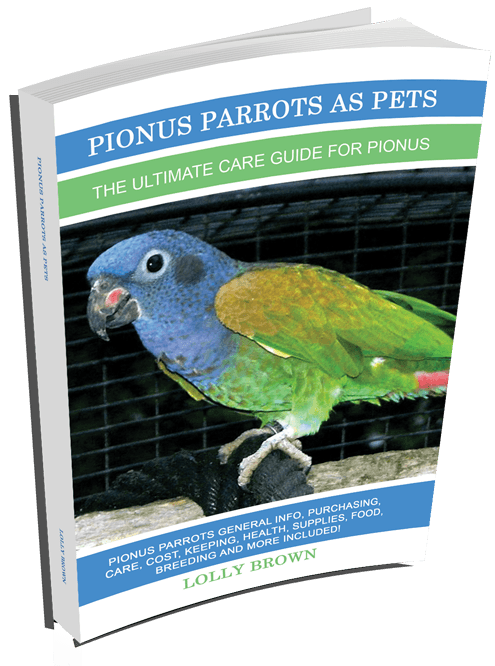TABLE OF CONTENTS
- Introduction 1
- Chapter One: A Closer Look at Pionus Birds 3
- General Characteristics 4
- Types of Pionus Parrots 6
- Chapter Two: Pionus Parrots as Pets 11
- Physical and Behavioral Characteristics 12
- Chapter Three: Species and Subspecies of the Pionus Parrots 17
- Blue-headed Pionus 18
- The Ecuadorian Sordid Pionus 19
- The Columbian Sordid Parrot 20
- The Maximilian’s Parrot 21
- The Plum-crowned Parrot 22
- The Red-billed Pionus 24
- Subspecies of Red-billed Pionus 24
- Chapter Four: Purchasing a Healthy Parrot 27
- Cost of Buying a Pionus Parrot Species 28
- Some Reminders Before Acquiring a Pet Parrot 29
- Choosing a Breeder 31
- How to Spot a Healthy Pionus 33
- Chapter Five: Nutrition and Feeding 35
- Caring for and Feeding Your Pionus 36
- Chapter Six: Housing, Bird Rooms and Maintenance 43
- Cage Measurements for Pionus Parrots 44
- Bird Proofing Rooms 47
- Chapter Seven: Temperament and Training 55
- Social Behaviors 56
- Training and Handling Pionus Parrots 57
- Initial Training 57
- Advanced Training 58
- Playtime Activities 59
- Chapter Eight: Grooming Needs and Health Care 61
- Importance of Grooming Your Parrot 62
- Bird Baths 62
- Wings 63
- Beak 64
- Nails 65
- Health Care 66
- Chapter Nine: Breeding Your Pionus Parrots 77
- Pionus Parrot Sexing 78
- Breeding/Reproduction 78
- Breeding Environment 79
- Egg Laying and Hatchlings 79
- Potential Health Problems 80
- Life Span and Availability 81
- Chapter Ten: Additional Requirements and Summary 85
- Quick Summary 86
- Bird Housing, Toys, Playpens and other Equipment 87
- Housing and Bird Cages for Different Species 88
- Temperatures 88
- Health Maintenance 89
- Legal Aspects of Owning 90
- Tips of How to Spot a Legit Breeder/Bird 91
- Glossary of Bird Terms 93
- Index 99
- Photo Credits 105
- References 107

